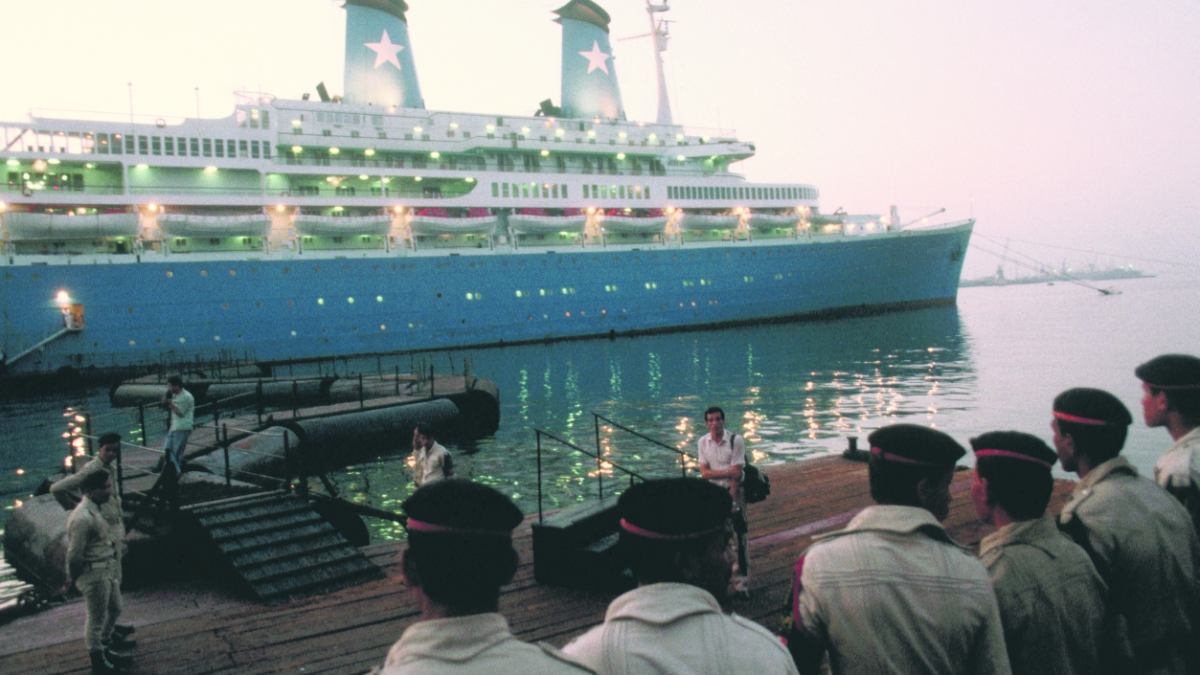Operas always tell stories of people, but their protagonists are usually invented, legendary or mythological. It must have therefore come as a shock to everyone when Claudio Monteverdi based his Coronation of Poppea (1643) on the history of Empress Poppea, Emperor Nero and the philosopher Seneca. From that moment on, composers have sometimes drawn their inspiration from real biographies. Whenever this happens, however, the usual practice is to put historical characters on stage long after the death of their real-life counterparts as if the delay was necessary to get some perspective.
Such is not the case with operas by John Adams (born 1947), an American composer of instrumental music (he was awarded the prestigious Grawemeyer Award for his Violin Concerto), chamber music and film scores (Io sono l’amore directed by Luca Guadagnino) as well as a minimalist with the heart of a romantic. The protagonists of his operas whose librettos were written by Alice Goodman – Nixon in China (1987) and The Death of Klinghoffer (1991) – are figures from recent history.
The three-act opera Nixon in China is set in Beijing in 1972 and recounts the events related to the first historical visit of the President of the United States to China. The voices are allocated in an interesting way: President Richard Nixon is a baritone, his wife Pat a soprano, the Chairman of the Communist Party of China, Mao Zedong, a tenor, Chinese Prime Minister, Chou Enlai, a baritone and Nixon’s adviser Henry Kissinger a bass. They are all definitely real figures. Indeed, some of them – except for Mao Zedong, the Chinese leader in 1949–76, and Prime Minister Chou Enlai, in office from 1949 until his death – were still alive at the time of the première (Kissinger, the national security adviser and American Secretary of State, is still among us).
In Act 1, we watch the beginning of the American visit: welcome at the airport (Scene 1), first talks (Scene 2) and a banquet (Scene 3). One can feel distance and mutual misunderstanding. In Act 2, we see the First Lady visit the monuments of Beijing, both those dating back to former times and the ones from the communist era (Scene 4). In the evening the guests go to the Beijing opera where they watch the revolutionary ballet The Red Detachment of Women (Scene 5). Act 3 shows the last night of the Americans in Beijing. They ask themselves whether the visit was successful and whether it will be historically important. The answer is yes, but both leaders wonder if it brought them closer to making their youthful dreams come true. Mao Zedong wanted to put the ideals of the Chinese Cultural Revolution in practice (but did he ever think about the number of victims?), whilst Nixon dreamt of a hamburger stand (does this sum up the attitude to politics of the only American President to resign before the end of his term following the Watergate scandal?). Only the old Prime Minister Chou Enlai (1898–1976) is devoid of all desires and dreams and does not wait for anything.
The case of The Death of Klinghoffer is different: its libretto tells the story of the hijacking of a luxurious cruise liner, the Achille Lauro, by four terrorists from the Palestine Liberation Front in October 1985. After holding the ship for several days and failed attempts to dock it in Syria and Cyprus, the terrorists decided to send a message to the world. From the large group of American tourists, they selected Leon Klinghoffer, a retired businessman of Jewish origin confined to a wheelchair following two heart attacks who took the cruise with his wife and friends to celebrate their 36th wedding anniversary. The terrorists took him onto the open afterdeck and shot him there, forcing crew members to throw the body into the sea, get rid of the wheelchair and wash the blood stains away.
It is these events that are the focus of the libretto to Adam’s opera divided into two acts and a prologue in which the Chorus of Exiled Palestinians lament the loss of their homeland after the state of Israel was founded and the Chorus of Exiled Jews complain of their fate as a people wandering in search of the promised land. Act 1 narrates the events related to the hijacking from different perspectives (Captain, Swiss Grandmother, Austrian Woman and the Terrorists: Molqi and Mamoud). We discover the emotions of the protagonists, like the Swiss Grandmother who is relieved that she is not a Jew, or the Austrian Woman who locked herself in the cabin to stay as far away as possible from idiots. Most importantly though, Adams and Goodman give us an insight into the feelings of the terrorist, Mamoud, who wants to die for the cause, mocks the passengers, looks for a radio station with his favourite Arabic music and envies birds their freedom.
Except for the universal chorus opening that refers to the biblical story of the hate between Sara and Hagar and their rivalry for Abraham’s love and offspring, Act 2 quickens the pace. When Mamoud tells the passengers that they are going to die, Klinghoffer begs for mercy for himself and his wife. In vain. A conflict between the terrorists leads to the man’s death.
Operas always tell stories of people, but their protagonists are usually invented, legendary or mythological.
In The Death of Klinghoffer, Adam’s music, static and contemplative, is closer to an oratorio. It brings to mind the baroque Passions of Bach or Handel’s oratorios (like Israel in Egypt). The libretto consists of monologues, sometimes simultaneous, interspersed with commentary from the chorus. The finale is the most impressive element: we first hear the farewell, then the stopped aria of a drowning Klinghoffer (with the prayer May the Lord…), then the morning chorus, and finally the lament of Marilyn Klinghoffer. Her words ‘You embraced them!’ reflect both her anger and helplessness.




